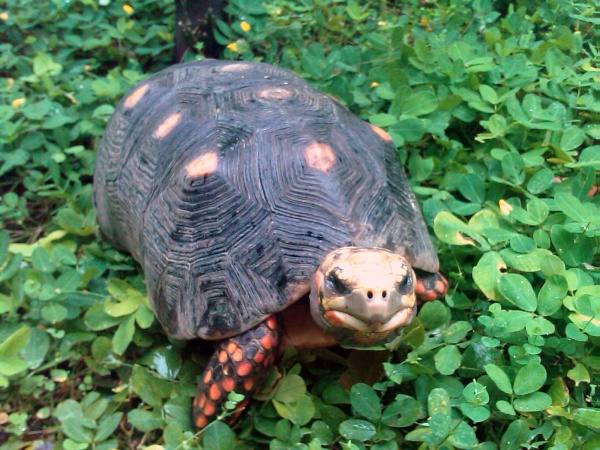Facts About Red-footed tortoise
The red-footed tortoise, native to northern South America, is a captivating species known for its medium size. Typically measuring around 30 cm, some individuals can grow to over 40 cm. Their dark-colored shells feature a distinctive lighter patch in the center of each scute, while their dark limbs are adorned with bright scales that range in color from pale yellow to dark red. Closely related to the yellow-footed tortoise of the Amazon Basin, they are popular pets. However, over-collection has rendered them vulnerable to extinction.
In the wild, red-footed tortoises inhabit savannahs and forest edges around the Amazon Basin. They maintain an omnivorous diet consisting of plants, fruits, grasses, flowers, fungi, carrion, and invertebrates. Unlike some reptiles, they do not brumate (hibernate) but may aestivate (become dormant) during hot, dry weather.
These tortoises face threats from predators such as jaguars and humans. Population densities fluctuate widely due to habitat destruction and over-collection for food and the pet trade. Depending on the region, they are known by various common names, and their taxonomy has undergone revisions over the years.
Male red-footed tortoises tend to be slightly larger and more colorful than females—a phenomenon known as sexual dimorphism. They also exhibit regional variations in color, shell shape, and anatomical features. Their range extends from southeastern Panama to northern Argentina, with noticeable differences between northern and southern variants.
Ecologically, red-footed tortoises prefer specific habitats, forage for a wide variety of foods, and demonstrate intriguing social behaviors such as communal shelters and group feeding. While young tortoises face high predation rates, adult tortoises are primarily threatened by jaguars.
Conservation efforts are underway to protect the red-footed tortoise, which is listed as vulnerable. They are frequently hunted for food in their native range, and habitat destruction poses a significant threat. For those keeping them as pets, it is crucial to provide proper housing, a suitable environment, and a diverse diet rich in calcium and fiber.

 Peru
Peru